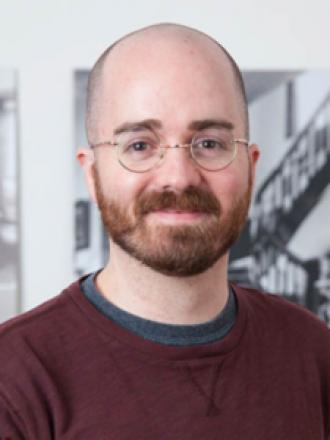In this week’s lecture, Jacob Gaboury, assistant professor of new media history and theory at UC Berkeley presented the connections between experimentations in Computer Sciences and Art. Focusing on the period of the 1960’s to the 1980’s, Gaboury organized the talk in three parts: First presenting two case studies on experimental computer sciences, second exposing the relationship between public and private funding in experimental research, and third, focusing on the Bay-Area scene and its specificities.
Gaboury started by reminding us how computer sciences the way we know it today did not exist until the 1960’s. Nevertheless, as the lecturer pointed out, digital computers were developed during the Second World War and they were used mostly for mathematical calculations. “All computer science was experimental back then”, he emphasizes. The year of 1957 was a turning point for computer sciences. While the cold war was pushing the space race, the U.S. started to invest a lot in research towards that technology. One of the outcomes of that was the “Advanced Research Projects Agency” (ARPA), a military funding for research towards technology. ARPA was extremely important for advancements in computer sciences specifically for the kinds of projects it would fund, mostly giving a lot of agency to the researchers and often partnering with educational institutions. From this initial phase, many major contributions to the field were made. Pioneer inventors from that time are recognized today as the inventors of programs such as the Arpanet, which is considered the predecessor to the modern internet the Adobe System, Atari, Pixar animations and so forth. In order to nourish a creative environment, the At&T Bell Labs, for example, would promote collaborations between engineers and artists. Computer artist Lillian Schwartz’s multi-media works were a result of these partnerships.
Nevertheless, as Gaboury exposed, there was an industry-wide dramatic shift in the 1970’s. With the creation of the Mansfield amendment, it was prohibited for military funding to support research that lacked a direct relationship to specific military functions. The ARPA Era came to an end, and researchers fled from Universities into research towards capitalized experiences. “But experimentation is usually not generally commercial or market-driven”, highlighted Gaboury. Free space for experimentation that was once so fertile suddenly was lost, and although commercial companies also created innovative solutions and products, the goal was never anymore the same. To illustrate this point, Gaboury shared some examples of Bay Area companies and projects such as the Xerox Parc or Berkeley Community Memory Systems. Nevertheless, concluding his talk, the lecturer made clear some of his earlier points: experimentation is central to technological growth and innovation; what made possible for computer sciences experimentations to exist was open-ended funding; and finally, the principal force of innovation has been community formation and communal participation, not capital.
Lauren Belik (PhD Student, Architecture) reviewed the February 21, 2018 talk with Jacob Gaboury, as part of the Spring 2018 Arts + Design Wednesdays @ BAMPFA series. To learn more about the series, see below:
Arts + Design Wednesdays @ BAMPFA: Experiment and Exploration. This series explores the exciting world of the Bay Area’s alternative, underground, and experimental media arts communities and the ways they have transformed contemporary art and media culture. Led by UC Berkeley Associate Professor of Film and Media Jeffrey Skoller, the series engages prominent media artists, curators, and critics to explore the idea of experimentalism in art as a risk-taking approach to creative expression and as a philosophical position that emphasizes art as process and invention over product and professional mastery.
Arts + Design Wednesdays @ BAMPFA is organized and sponsored by UC Berkeley’s Arts + Design Initiative in partnership with Big Ideas courses. In-kind support is provided by BAMPFA. Learn more here.
